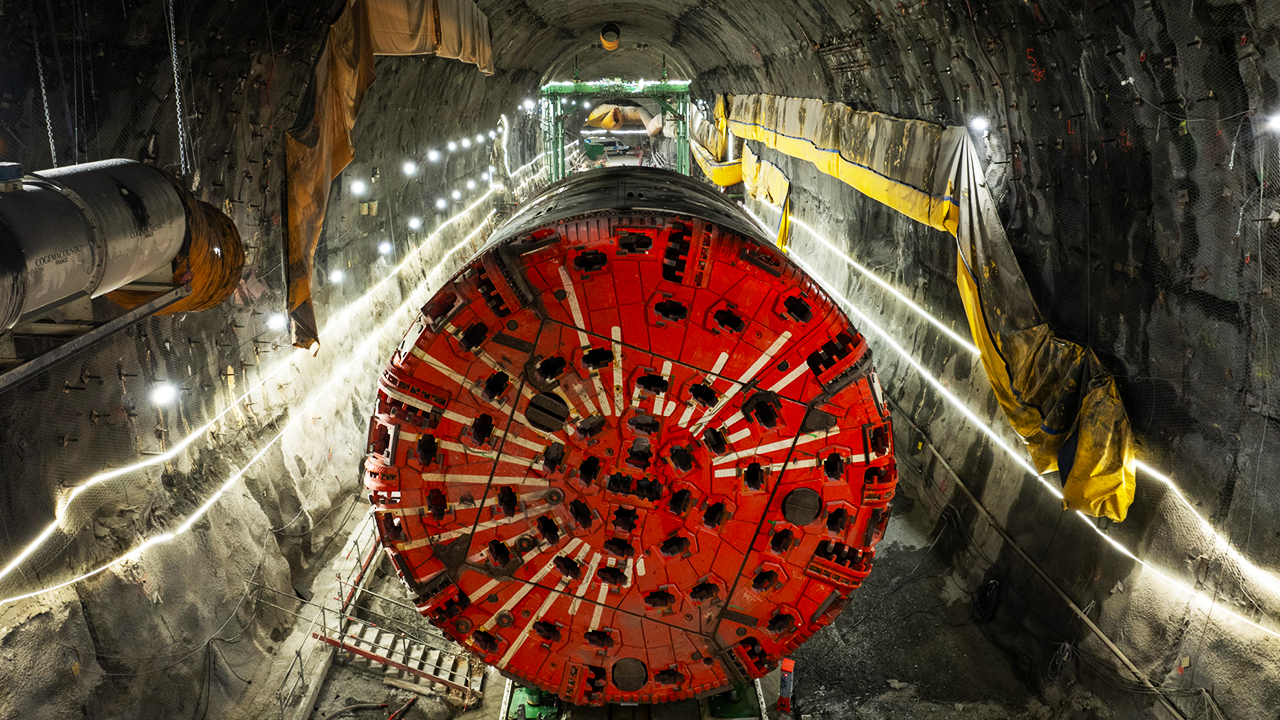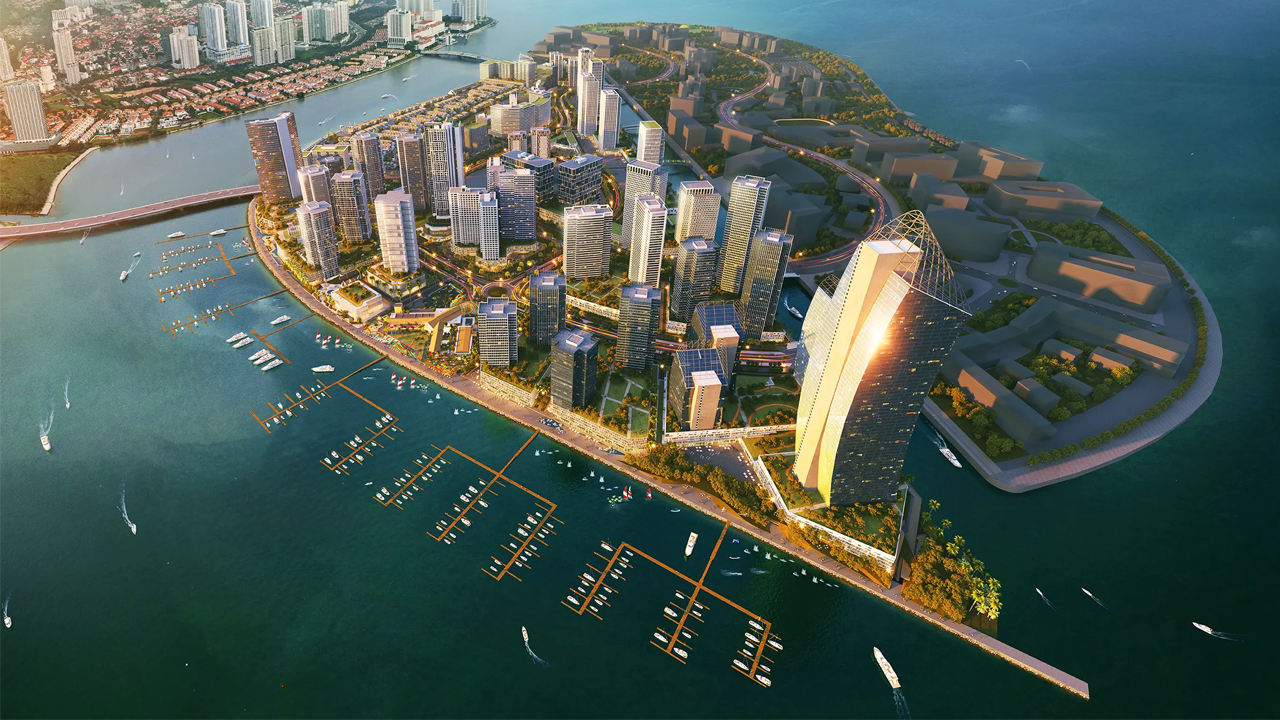China is Finally Finishing Its Ghostscraper
- Youtube Views 619,845 VIDEO VIEWS
Video narrated and hosted by Fred Mills. This video contains paid promotion for AMD Threadripper.
GOLDIN FINANCE 117 is the tallest abandoned building in the world. It stands 597-metres high, already making it the 6th tallest skyscraper on earth.
It would absolutely dominate the skyline of any city you could place it in. But it sits on the outskirts of a place you’ve probably never heard of. And it’s unfinished, with construction having stopped in 2015.
For a decade it has been tempting daredevil climbers but mostly serving as a national embarrassment. A symbol of everything wrong with China’s “build it and they will come” real estate boom.
But that’s about to change…
The world’s tallest ghostscraper is finally going to be finished.
Megacities built overnight
Goldin Finance 117’s 128 floors were meant to house offices and a luxury hotel. It was to be topped off by a literal diamond - well, diamond-shaped atrium.
The entire project emanated luxury. Or decadence. Depending on who you asked.
The tower was meant to anchor billionaire Pan Sutong’s Goldin Metropolitan development here in Tianjin.
This scheme, like the tower, was also aimed at the super rich and was planned to include residential, hospitality, and commercial spaces. A city within a city - for those who could afford it.
It's a remnant of the China from the early 2000s.
China had just undergone the largest migration in human history. More than 300M people moved from the farms to the cities in search of prosperity.
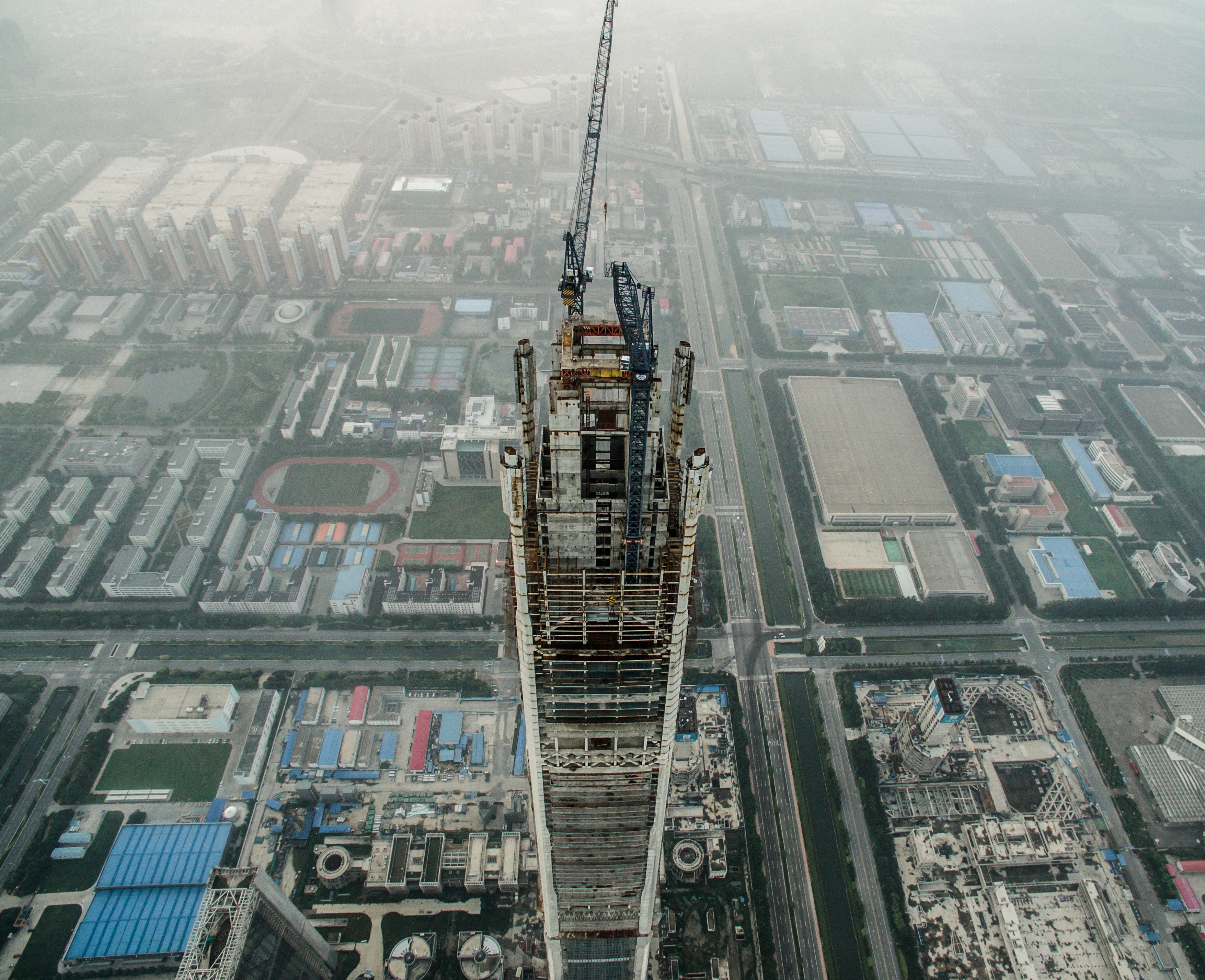
Above: The unfinished skyscraper would dwarf any city. Image courtesy of Alexander Kaunas.
All of these people needed space to live and work and so megacities were built almost overnight. The property market was booming on a scale never seen before.
“Goldwin, the Hong Kong enterprise, really wanted to get into the Chinese real estate market. So, it wanted a signature project that can really elevate itself to the top of the industry,” explains Shitong Qiao, Professor of Law at Duke University.
Chinese cities are no stranger to these “signature projects”. Think of the CCTV headquarters in Beijing, or the tallest buildings in Shenzhen, Guangzhou or, of course the most famous of all of them, Shanghai.
The nature of these enormous projects is economic yes, but also political.
“For city mayors back then, and still true to some extent today, to have a signature project can elevate both the status of the city within China, but also the career prospect of the mayor or the party secretary, who is the number one in the city,” Qiao tells us.
How to build a ghostscraper
The tower itself is incredibly impressive. As far as signature pieces go, it’s right up there.
It is both very thin and very tall and so had to utilise state-of-the-art engineering.
It is composed of a reinforced concrete core coupled with an outrigger and belt truss system. This design enhances lateral stiffness and helps the building resist wind and seismic forces.
Several high-strength steel mega-columns around the perimeter help support the massive load of the tower. These work with the core to provide structural integrity.
At nearly 600 meters tall, the tower had to be engineered to withstand immense wind loads. Wind tunnel testing and aerodynamic shaping helped minimize any sway.
The building is set upon a deep pile foundation, essential for supporting such a heavy structure on Tianjin’s relatively soft ground. These piles likely reach dozens of meters into the bedrock to distribute weight and prevent settlement.
Its diamond-shaped crown - meant to house a sky lobby and observation deck - is one of the building's most complex architectural elements and required intricate steelwork and cladding.
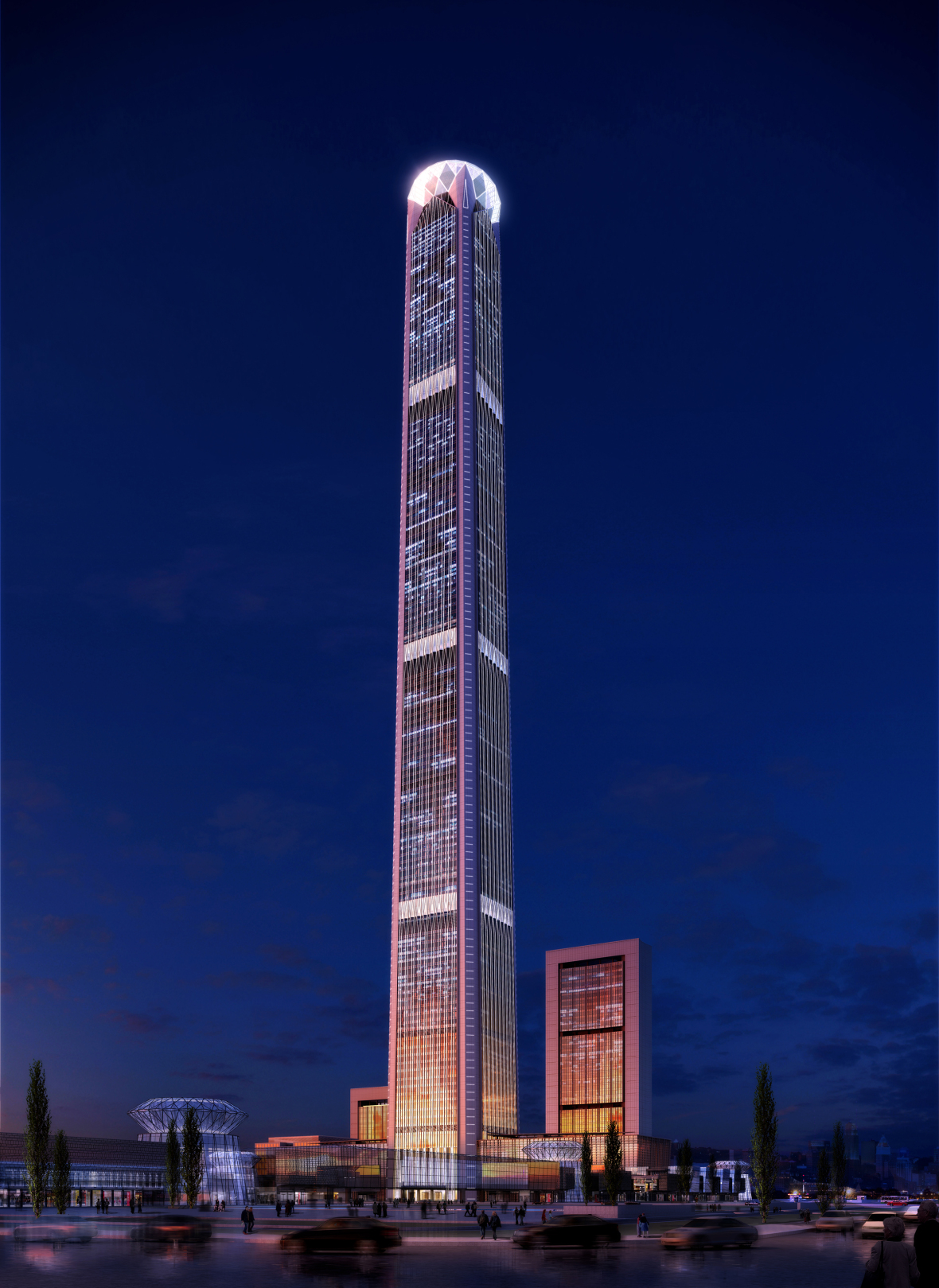
Above: The tower's diamond-shaped crown in original renders.
Though never fully fitted out, the plan included over 80 high-speed elevators, with zoned service for various sections. They would reach speeds of over 10 metres a second - or 36 kilometres an hour.
Let’s just say it wasn’t an engineering fault that caused construction to halt on this megatall.
It was a deeply complicated financial system that crumbled like a house of cards.
Why China would build an empty megatall
“We need to understand a little bit of the operation of Chinese real estate business. Which is not necessarily the same as the real estate operation in other countries,” says Qiao.
Firstly Goldin Finance needed the land the tower is built on. To get that they needed the support of local government. And promising a signature tower for the city is one solid way to go about it.
“And once you have that land, that's like 50% of the business. Then you can use that land as collateral to borrow money from the state-owned banks.
“You get land, you use the land as collateral, you get loans from the banks. The project is going to carry on without much investment from you.”
At the time Tianjin was emerging as a major city in the region.
“The economy again was taking off. Real estate industry was taking off, and also for the city of Tianjin, which is now about 30 to 40 minutes away from Beijing by the high-speed railway, it has always been an important city in China.
“So all looked really good, right? It's like the political motivation, the economic motivation, and also the operational model of Chinese real estate business all actually kind of allowed this project to go ahead.”
What’s important to note is that to maintain the integrity of the Chinese property market, new developers are not permitted to start pre-sales on their schemes until authorities have inspected and signed off on the finished product, with exemptions typically only granted to established and usually state-owned firms.
At the time, Goldin Properties was a publicly listed, Hong Kong-based company and a relatively new player in the mainland Chinese market. This meant it had to fully self-finance the entire USD $10BN master plan and wouldn't be able to begin recouping its investment until each building was completed.
This put the entire scheme in a precarious situation from the beginning, but if the developer was able to put up the capital investment and there were no major disruptions to markets during construction, the rewards would be worth it. They went ahead and construction began on 18 August 2008.
But then the project stopped in 2015.
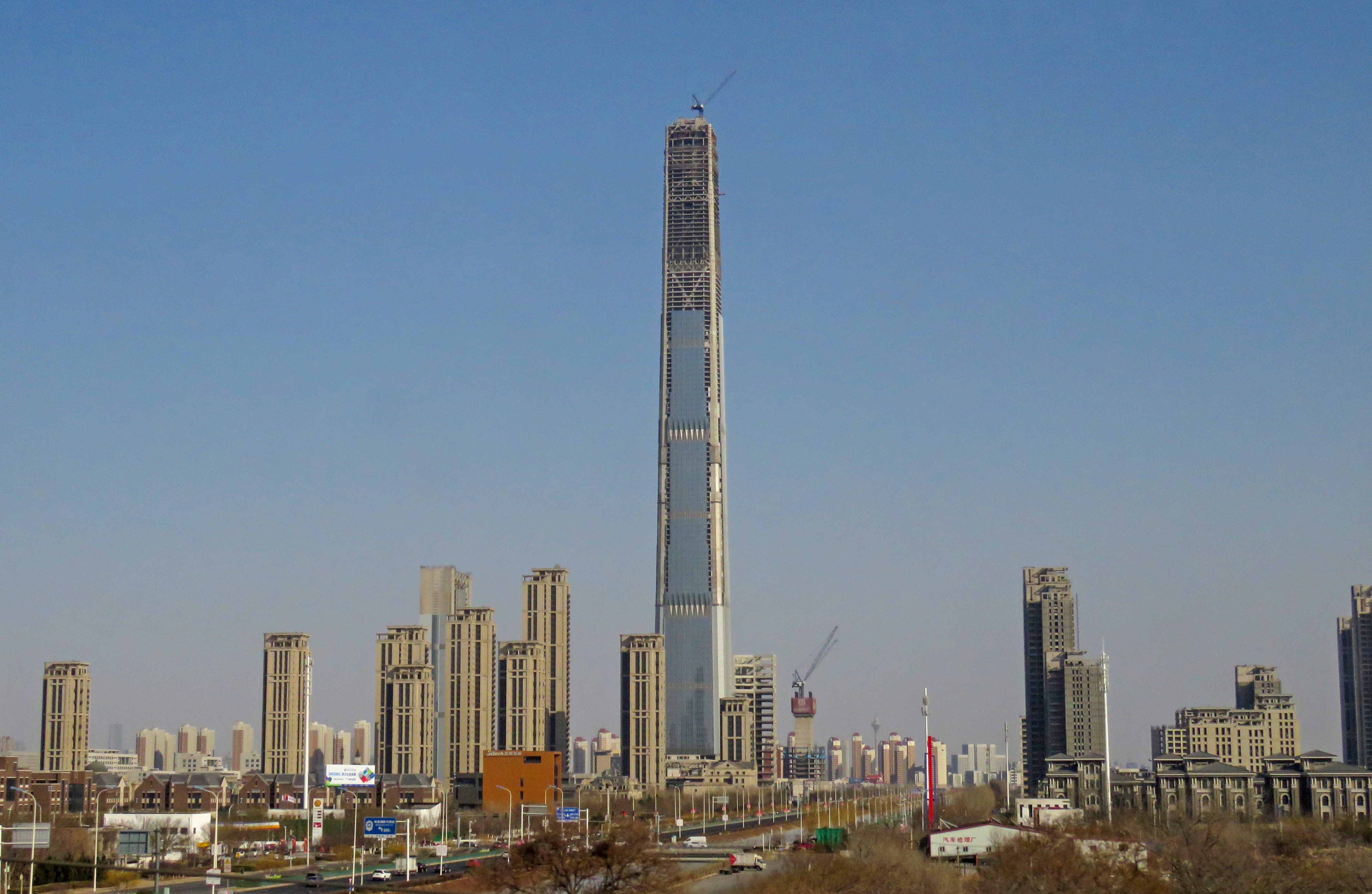
Above: The project stopped in 2015. Image courtesy of N509FZ.
“Okay, so in 2015 what happened was this Hong Kong developer’s stock price on the Hong Kong stock market basically dropped to like only about half of it. It's like within a couple of days,” explains Qiao.
China's stock markets plunged by over 30% in less than a month.
Many developers had borrowed heavily during the stock boom, including through stock pledges using their shares as collateral for loans.
When stock values collapsed, these companies faced margin calls, cash flow issues, and loss of financing options.
Goldin’s own share price on the Hong Kong Stock Exchange plummeted and company chairman Pan Sutong reportedly lost USD $13BN of his own fortune.
In August, unrelated to the towers there was a series of enormous chemical explosions in the port of Tianjin.
This coupled with the slowing economy made the once booming city less of an attractive destination for the elite.
“This financial loss or the dropping of the market value had a huge impact on the project. I said earlier, you can get loans from the bank. Nevertheless, you still need cash to maintain the operation.
“The developer was basically running out of cash, cannot pay people for the equipment, you know, cannot pay the construction workers etc.”
The topping-out ceremony in September was meant to reignite confidence in the project but by December 2015 all work had ceased.
The skyscraper now stood as an enormous ghostly concrete skeleton on the Tianjin skyline. And it would remain like this for a decade.
Tianjin was far from alone. There were a number of other cities that aimed for the heavens but could not complete their own signature projects.
But part of the reason for this problem was the cities themselves.
There are only two buildings in the entirety of China that are taller than Goldin Finance 117. Those two are in Shanghai and Shenzhen, two very different cities from Tianjin.
“They have the economy that can support such skyscrapers. But Tianjin, it does not have that,” says Qiao.
“Just next to it, you have Beijing. Beijing is an even more important city, right and a part of the function of Tianjin it actually is to serve Beijing. They were too ambitious, right? Too optimistic when they started such projects.”
A strange icon
Now, in 2025, many of these projects are finally seeing new life breathed into them.
The stalled 468-meter-tall Greenland Tower in the southwestern city of Chengdu will be completed.
As will Goldin Finance.
But the building, in the intermittent years, has become a sort of strange icon for the city, just not in the way the developers wanted.
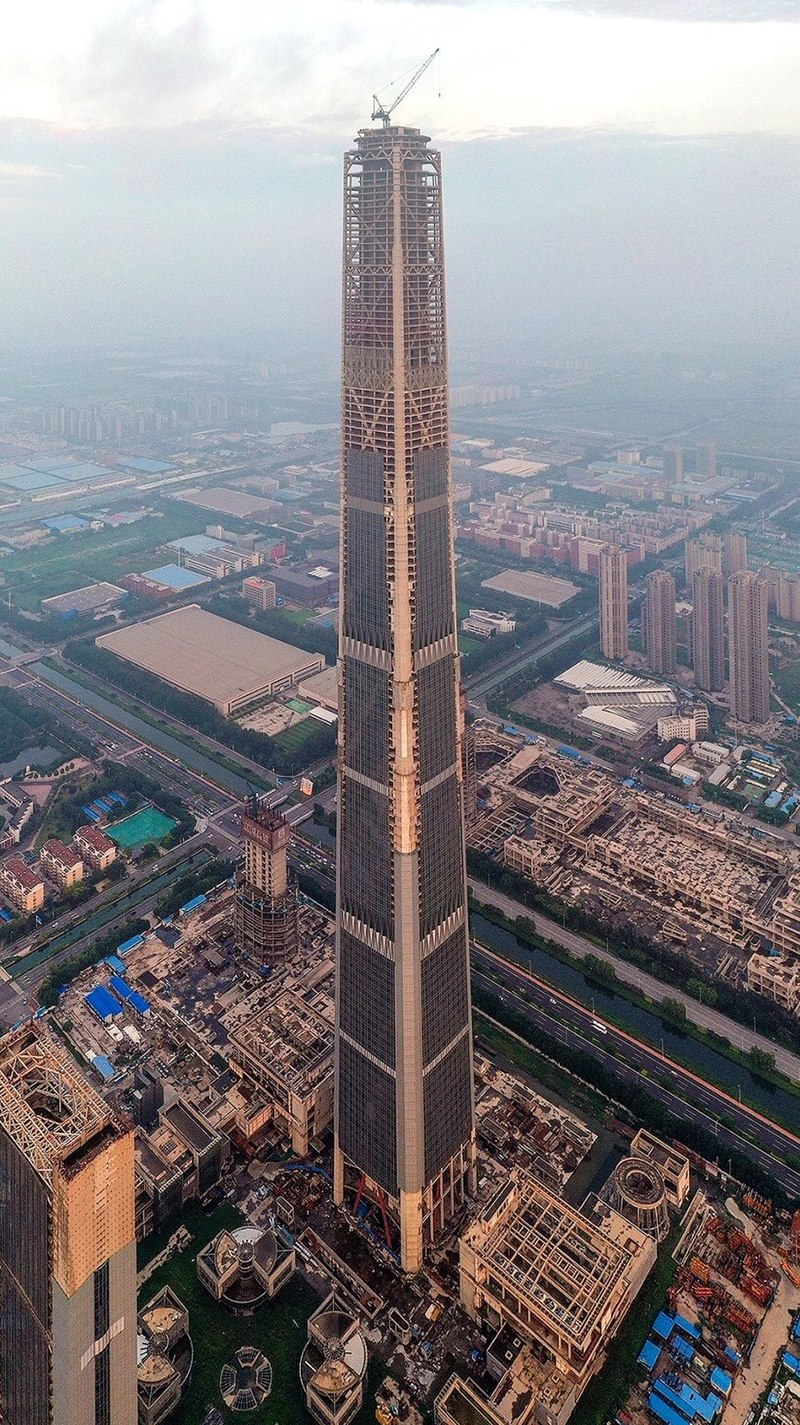
Above: The skyscraper has become a strange icon.
“It's kind of an embarrassment, particularly for the government leaders who initiated such a project.
“It has weirdly achieved that purpose being the signature, right? But it's unfinished, right? So in that sense, it's both an icon and also an embarrassment.”
There has been pressure on the local government for years to finally finish the building, or at least to make it appear finished on the outside.
There is also the very real fear that the Chinese economy depends too much on real estate with some sources saying it's about one third of the entire economy.
“Local government has accumulated a lot of debt because of the real estate industry. That's what they call the ticking bomb for the Chinese economy.”
This has been something China has been acutely aware of over the last decade. We’ve seen stringent new laws come in restricting the construction of skyscrapers and enormous vanity projects.
These laws have effectively banned new buildings over 150 meters in cities with populations under 3M - 150 metres is the height at which a building can be called a skyscraper.
Cities with more than 3M people can only build to a height of 250 metres, except in special circumstances.
Buildings over 500 metres, like the 597-metre Goldin Finance 117, are now banned outright.
But then a little thing called Covid happened.
“The economy really came into lots of trouble. So I think that has been in the past like two or three years, particularly after the pandemic, there has been a change of tone.”
China still needs money from the real estate market, but it needs it in a stable way.
“To achieve the purpose of stabilizing the Chinese real estate market, you also need to give people confidence,” explains Qiao. “So how to do that? Why don't we resume the projects, resume these signature projects?
“It's kind of like people buying luxury jewelry to tell you that I'm rich, I'm really committed to do this. I think it's a project to send signals to the market like we are back. For entrepreneurs, you shouldn't hesitate. We are interested in resuming the market.”
Restarting construction
It has been reported that the restart in construction began in May 2025. A new construction permit lists a contract value of almost 569 million yuan or $78M USD. It also suggests that the developer’s name has been dropped from the title as Goldin Finance is now defunct .
Which is no worry to the locals who have already dubbed the skyscraper “the walking stick” - thanks to the diamond on the crown.
This new permit has been issued to P&T Group and BGI Engineering Consultants - most likely with help from the state government.
It is unclear if the building will still be a hotel and commercial space, especially as it is now being completed in a China that is very different to the one from a decade ago.
“You really need a big investor to come in to say, I need to rent half of the floor or one floor,” Qiao tells us. “But with the economy going down, foreign companies, some of them have left China. And also the vacancy rates of such skyscrapers, I'm talking about the finished ones, has already been pretty high.”
It is also unclear exactly how the skyscraper will be completed after sitting empty for so long. Chinese officials have stated that either way the building will be finished in 2027.
Most likely construction workers will have to retrofit outdated systems, address material degradation, and update the building to meet modern safety codes.
A full inspection of the existing concrete core, steel frame, facade, and foundation for weathering, corrosion, and degradation will also have to be completed.
This will be done by taking samples from the steel and concrete skeleton of the building to be tested for strength, especially after being exposed to the elements for a decade.
There will probably need to be redesigns of internal systems including the elevators, electrical, and plumbing may all need to be re-specified using newer standards.
Prolonged exposure to the elements and pollution may have also caused corrosion of steel reinforcements, spalling or cracking of concrete, and degradation of exposed facade elements.
Long-term load-bearing elements will need to be checked against fatigue or unanticipated movement.
And that’s far from a comprehensive list of issues.
If the new developers decide to change the building’s use from commercial to say residential this will require even further retrofitting.
These construction crews will have their work set out for them, there’s no question about that.
Tianjin will finally get its crown, even if its jewels are hollow.
Narrated by Fred Mills, additional footage and images courtesy of Goldin Properties Holdings Limited, Gringo, Alexander Kaunas, N509FZ, Google Earth, Styfly Studios, SkyscraperPage, UncleTV and Muxuan1983.
Try the AMD Ryzen™ Threadripper™ 👉 https://bit.ly/3IxnGuD
We welcome you sharing our content to inspire others, but please be nice and play by our rules.
